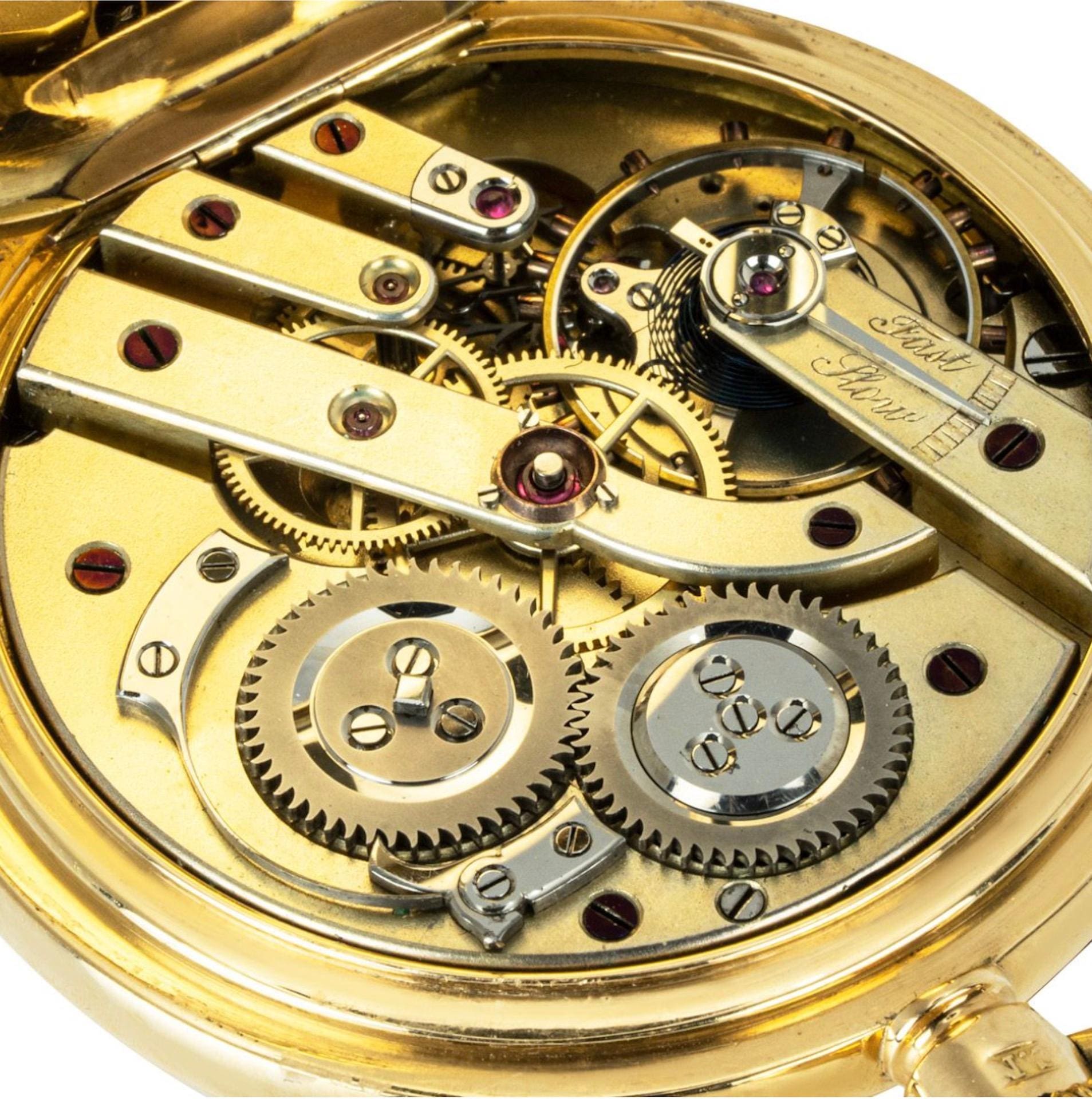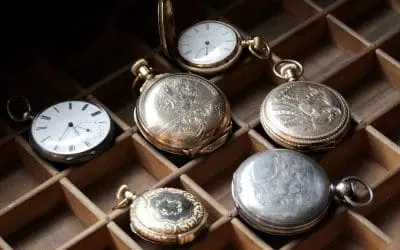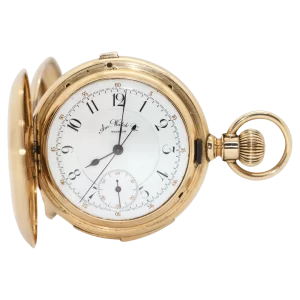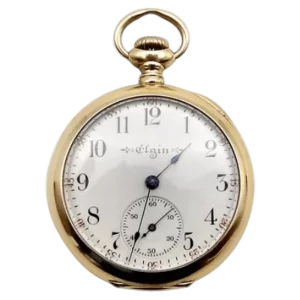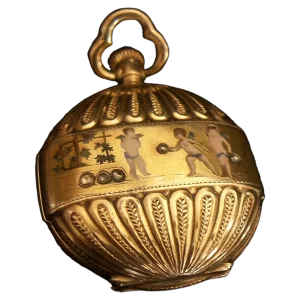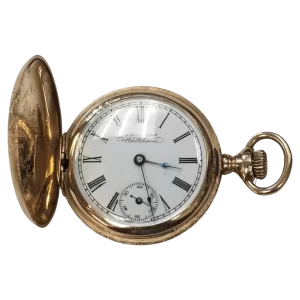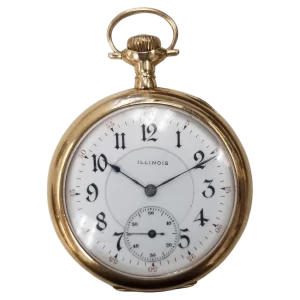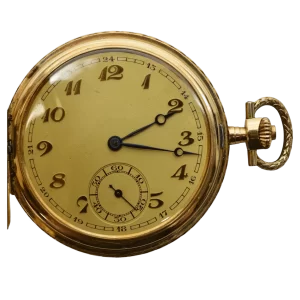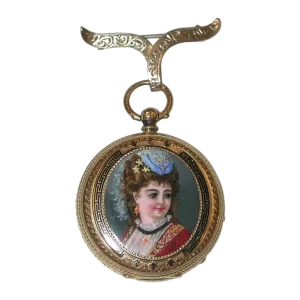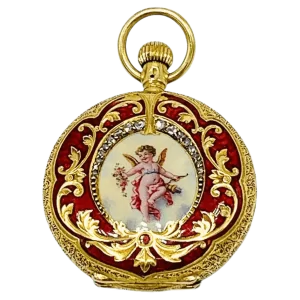Antique pocket watches are more than just timekeeping devices – they are a piece of history that can tell a story about the past. Whether you’ve inherited an antique pocket watch or you’re a collector yourself, it’s important to understand the value and significance of these vintage timepieces. In this blog post, we’ll explore how to appraise and insure your antique pocket watch, as well as how to care for it and even sell it. Read on to learn more about these fascinating pieces of history.
The History and Significance of Antique Pocket Watches
Antique pocket watches have been around since the 16th century when they first appeared in Europe. These early pocket watches were often ornate and intricate, featuring designs that were beautiful and functional. Throughout the centuries, pocket watches became increasingly popular and were even carried by soldiers during wartime.
Some antique pocket watches were made as early as the 1500s and are considered to be some of the rarest and most valuable in the world. These watches were often handmade by skilled craftsmen and may have unique design features that make them highly sought-after by collectors.
Aside from their historical significance, antique pocket watches are also prized for their mechanical movements, which are often intricate and precise. Many antique pocket watches have been passed down through families for generations, making them not only valuable but also sentimental items.
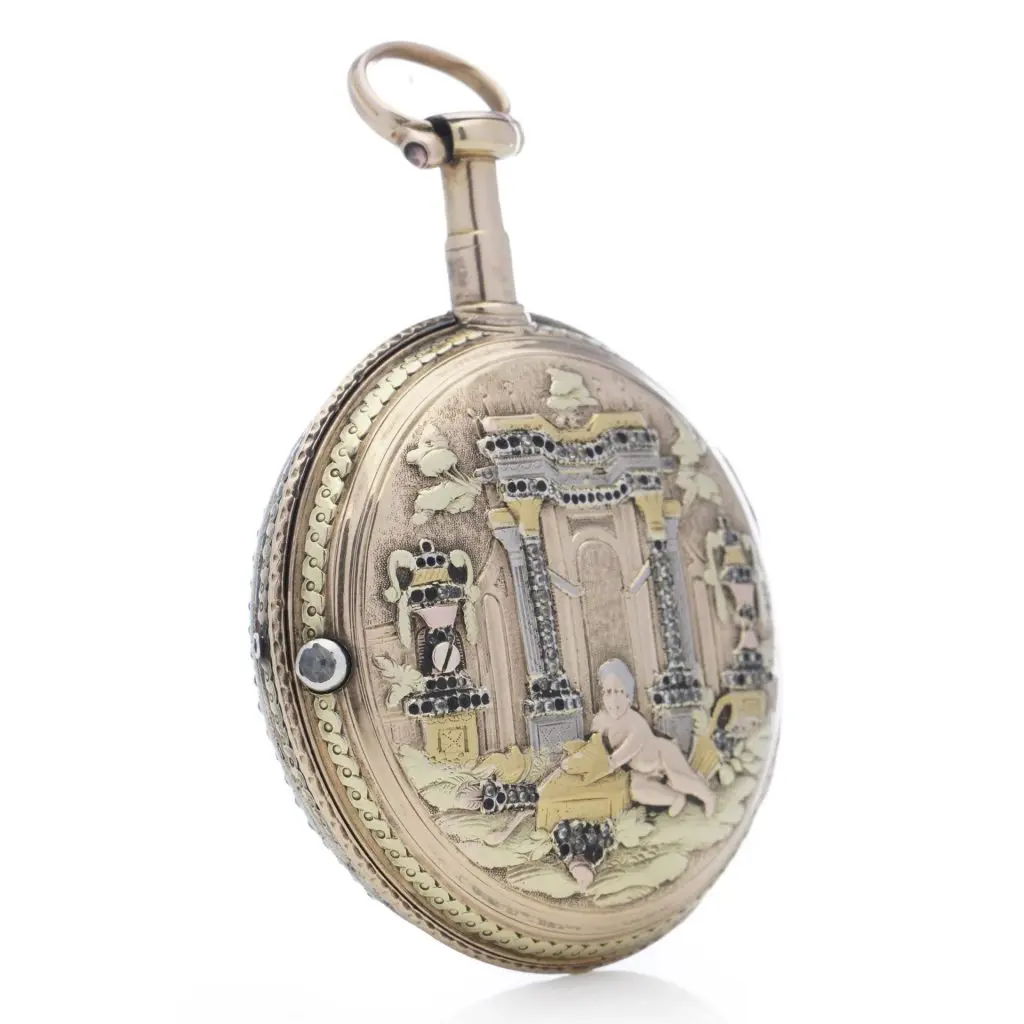
Determining the Value of Your Antique Pocket Watch
The value of an antique pocket watch can vary greatly depending on several factors. These factors include:
- Age: The age of the pocket watch can greatly affect its value. The older the watch, the more valuable it is likely to be.
- Condition: The condition of the watch is also a crucial factor. A pocket watch in pristine condition will be worth more than one that shows signs of wear and tear.
- Rarity: An antique pocket watch that is rare or unique is more valuable than one that is more commonly found.
- Brand: Some brands of antique pocket watches are more desirable and valuable than others.
- Movement Type: The type of movement used in the pocket watch can also affect its value. Mechanical movements tend to be worth more than quartz movements.
To determine the value of your antique pocket watch, it is recommended that you have it appraised by an expert. An appraiser will take into account all of these factors and give you an estimation of the watch’s value. This can ensure that you receive fair compensation if you decide to sell the watch or insure it.
Factors That Affect the Value of Your Antique Pocket Watch
When it comes to determining the value of an antique pocket watch, there are several factors to consider:
- Brand: Some brands are more prestigious and sought after, which can drive up the value of an antique pocket watch.
- Age: Generally, the older the pocket watch, the more valuable it is.
- Condition: Watches in excellent condition will fetch higher prices than those with visible wear and tear.
- Materials: The materials used in the construction of the pocket watch can affect its value. For example, gold or platinum watches may have higher values compared to those made from silver or brass.
- Movement type: There are different movements types found in antique pocket watches – some more complex and desirable than others.
- Uniqueness: If the watch has any unique design features or is a rare model, it can significantly increase its value.
- Originality: Watches that have their original features and components tend to be more valuable to collectors than those that have been refurbished or altered.
Keep in mind that determining the value of an antique pocket watch is not always straightforward. Consulting with an expert appraiser or watchmaker is highly recommended to ensure you get an accurate assessment of your timepiece’s worth.
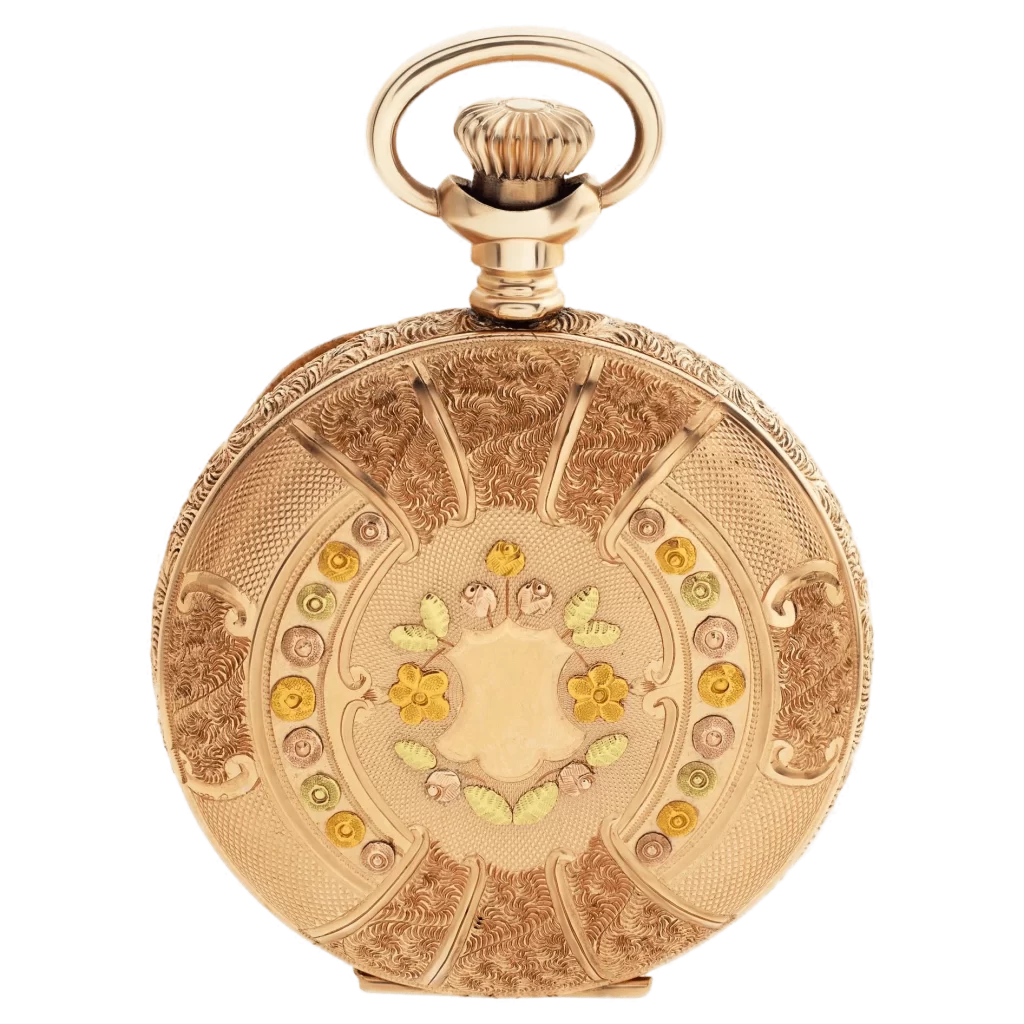
Identifying and Authenticating Your Antique Pocket Watch
Identifying the maker and age of your antique pocket watch can be challenging, but it is essential when seeking to determine its value and authenticity.
Identifying Your Antique Pocket Watch
One way to identify your antique pocket watch is to research its unique design features. Many pocket watches have distinct characteristics that can help narrow down their age and maker. For example, some antique pocket watches may have specific decorative elements that were commonly used during a particular time period.
Another way to identify your antique pocket watch is to look for markings on the watch itself. Many pocket watches have serial numbers, hallmarks, and other identifying markings that can reveal the maker, model, and age of the pocket watch. These markings are often found on the back of the watch, the inside of the case, or on the movement itself.
Authenticating Your Antique Pocket Watch
To authenticate your antique pocket watch, it is recommended to consult with a professional watchmaker or appraiser. These experts can examine the watch for signs of wear, damage, and repair and can confirm whether the watch is original or has been altered in any way.
One of the most common ways to authenticate an antique pocket watch is to examine its movement. The movement is the mechanism inside the watch that controls its timekeeping and must be consistent with the time period in which the watch was made. A professional watchmaker can also examine the watch’s case, dial, and hands for authenticity.
Overall, properly identifying and authenticating your antique pocket watch is crucial for determining its value and ensuring that it is a sound investment.
Maintaining and Caring for Your Antique Pocket Watch
Proper maintenance and care of your antique pocket watch will help preserve its value and condition. Here are some tips to ensure your pocket watch lasts for years to come:
1. Handle with Care
When handling your antique pocket watch, be gentle. Avoid dropping it or subjecting it to any impact. Treat it as a delicate and valuable item that requires special attention.
2. Store Properly
Store your antique pocket watch in a dry and cool place, away from direct sunlight. Avoid storing it in damp or humid areas, as this can cause rust and damage to the watch.
3. Wind the Watch Regularly
If your antique pocket watch is a mechanical watch, wind it regularly to keep it running smoothly. Follow the instructions provided by the watchmaker or refer to a specialist to know how to wind it correctly.
4. Service Regularly
Find a qualified watchmaker who specializes in antique pocket watches. You might have to have your antique pocket watch serviced every two to five years to ensure it stays in excellent condition.
5. Avoid Moisture
Avoid exposing your watch to moisture or water, as this can cause rust and damage to the watch. Never wear your pocket watch while bathing, swimming, or doing any water-related activities.
6. Avoid Extreme Temperatures
Avoid exposing your watch to extreme temperatures or high heat, as this can damage the movement and cause it to stop working.
By following these tips, you will be able to maintain and care for your antique pocket watch properly.
Insuring Your Antique Pocket Watch: Why It’s Important
Antique pocket watches are not only valuable in terms of their sentimental and historical significance, but they also hold monetary value. As a result, it’s essential to protect your investment by having your antique pocket watch insured.
Without insurance, your antique pocket watch could be damaged, lost, or stolen, and you may not be able to recoup the financial investment you made. Insurance can help protect your antique pocket watch from unforeseen events that are out of your control.
Antique pocket watches are often passed down from generation to generation, making them invaluable family heirlooms. By having your antique pocket watch insured, you can pass it down knowing it’s protected and will continue to hold its value for years to come.
How to Choose the Right Insurance Policy for Your Antique Pocket Watch
Insuring your antique pocket watch is important to protect it from damage, loss, or theft. However, not all insurance policies are created equal. Here are some factors to consider when choosing the right insurance policy for your antique pocket watch:
Coverage Limits
Make sure the insurance policy covers the full value of your antique pocket watch. Some policies may have caps on the amount they will pay out, so be sure to read the fine print to avoid any surprises.
Deductibles
Consider the amount of the deductible and how it will affect your out-of-pocket expenses if you need to file a claim. A higher deductible may reduce your premium, but could also leave you with more expenses in the event of a claim.
The Reputation of the Insurer
Research the insurer’s reputation for customer service and claims processing to ensure you are working with a reputable company. Look for reviews and ratings from existing policyholders to get a better understanding of their experience with the insurer.
The Terms of the Policy
Read and understand the terms of the policy to ensure adequate protection in case of damages or loss. Some policies may exclude certain types of damage, such as water damage or theft, so it’s important to know what is and isn’t covered.
By choosing the right insurance policy, you can enjoy peace of mind knowing that your valuable antique pocket watch is fully protected.
What to Do in Case Your Antique Pocket Watch Gets Damaged or Lost
If your antique pocket watch gets damaged or lost, it can be a devastating experience. But there are steps you can take to protect your investment. Here’s what to do:
- Document the incident: Take photos of any damage or notes on when and where the watch was lost.
- Contact your insurance provider: Let them know what happened and provide any documentation or evidence you have gathered.
- Follow the procedure set forth by your insurer: Your insurance provider will guide you through the claims process and may require specific documentation, such as a police report.
- Consider repairs or replacements: Depending on the extent of the damage or the loss of your pocket watch, you may need to consider getting it repaired or replaced.
By following these steps, you can ensure a smoother and timely claims process, and potentially recover your investment in your antique pocket watch.
Selling Your Antique Pocket Watch: Tips and Best Practices
When it comes time to sell your antique pocket watch, there are a few tips and best practices to keep in mind:
- Research the market to determine a fair price for your watch. Look up recent sales of similar pocket watches to get an idea of what the market value is for your specific brand and model.
- Consider consulting with an expert appraiser or auction house to help you market and sell your pocket watch to a larger audience.
- Be honest about the condition of your pocket watch. Disclose any damage or repairs that have been made and be transparent about the watch’s history.
- Take high-quality photos of your pocket watch to showcase its unique design features and help buyers better understand its condition.
- Consider selling your pocket watch through online marketplaces or auction sites to reach a wider audience. Be sure to read the policies and fees associated with each platform before listing your watch.
- Be patient and open to negotiation. It may take some time to find the right buyer for your antique pocket watch, but don’t be afraid to negotiate on price and terms if necessary.
Remember, selling an antique pocket watch can be a complex process, so it’s important to do your homework and seek professional guidance if needed.
Conclusion
Appraising and insuring your antique pocket watch is essential to protecting its value and ensuring that you receive fair compensation if anything happens to it. Remember that the value of an antique pocket watch is determined by various factors such as age, condition, rarity, and brand.
When buying or selling an antique pocket watch, it is important to consult with experts who can help you make informed decisions and ensure that you get the best value for your investment. Proper maintenance and care can help preserve the value and condition of your antique pocket watch, so be sure to avoid exposing it to extreme temperatures, moisture, or direct sunlight.
Ultimately, if you own an antique pocket watch, consider insuring it to protect against loss, damage, or theft. Choose the right insurance policy for your needs, and have a plan in place in case something happens to your beloved timepiece. With the right precautions, your antique pocket watch can be a treasured possession for years to come.

